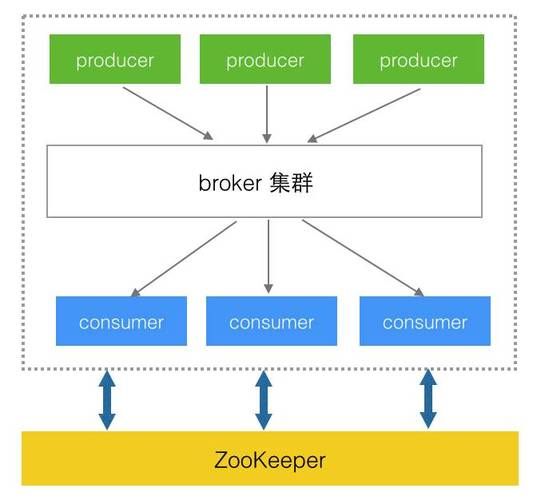
-
生产者发送消息,多个消费者只能有一个消费者接收到消息
-
生产者发送消息,多个消费者都可以接收到消息
(1)创建kafka-demo项目,导入依赖
<dependency>
<groupId>org.apache.kafka</groupId>
<artifactId>kafka-clients</artifactId>
<version>3.4.0</version>
</dependency>(2)生产者发送消息
import org.apache.kafka.clients.producer.KafkaProducer;
import org.apache.kafka.clients.producer.ProducerConfig;
import org.apache.kafka.clients.producer.ProducerRecord;
import java.util.Properties;
/**
* 生产者
*/
public class ProducerQuickStart {
public static void main(String[] args) {
//1.kafka的配置信息
Properties properties = new Properties();
//kafka的连接地址
properties.put(ProducerConfig.BOOTSTRAP_SERVERS_CONFIG,"192.168.140.100:9092");
//发送失败,失败的重试次数
properties.put(ProducerConfig.RETRIES_CONFIG,5);
//消息key的序列化器
properties.put(ProducerConfig.KEY_SERIALIZER_CLASS_CONFIG,"org.apache.kafka.***mon.serialization.StringSerializer");
//消息value的序列化器
properties.put(ProducerConfig.VALUE_SERIALIZER_CLASS_CONFIG,"org.apache.kafka.***mon.serialization.StringSerializer");
//2.生产者对象
KafkaProducer<String,String> producer = new KafkaProducer<String, String>(properties);
//封装发送的消息
ProducerRecord<String,String> record = new ProducerRecord<String, String>("green-topic","100001","hello kafka");
//3.发送消息
producer.send(record);
//4.关闭消息通道,必须关闭,否则消息发送不成功
producer.close();
}
}(3)消费者接收消息
import org.apache.kafka.clients.consumer.ConsumerConfig;
import org.apache.kafka.clients.consumer.ConsumerRecord;
import org.apache.kafka.clients.consumer.ConsumerRecords;
import org.apache.kafka.clients.consumer.KafkaConsumer;
import java.time.Duration;
import java.util.Collections;
import java.util.Properties;
/**
* 消费者
*/
public class ConsumerQuickStart {
public static void main(String[] args) {
//1.添加kafka的配置信息
Properties properties = new Properties();
//kafka的连接地址
properties.put(ConsumerConfig.BOOTSTRAP_SERVERS_CONFIG, "192.168.140.100:9092");
//消费者组
properties.put(ConsumerConfig.GROUP_ID_CONFIG, "group1");
//消息的反序列化器
properties.put(ConsumerConfig.KEY_DESERIALIZER_CLASS_CONFIG, "org.apache.kafka.***mon.serialization.StringDeserializer");
properties.put(ConsumerConfig.VALUE_DESERIALIZER_CLASS_CONFIG, "org.apache.kafka.***mon.serialization.StringDeserializer");
//2.消费者对象
KafkaConsumer<String, String> consumer = new KafkaConsumer<String, String>(properties);
//3.订阅主题
consumer.subscribe(Collections.singletonList("green-topic"));
//当前线程一直处于监听状态 每一秒拉取一次
while (true) {
//4.获取消息
ConsumerRecords<String, String> consumerRecords = consumer.poll(Duration.ofMillis(1000));
for (ConsumerRecord<String, String> consumerRecord : consumerRecords) {
System.out.println(consumerRecord.key());
System.out.println(consumerRecord.value());
}
}
}
}SpringBoot集成kafka
1.导入spring-kafka依赖信息
<dependencies>
<dependency>
<groupId>org.springframework.boot</groupId>
<artifactId>spring-boot-starter-web</artifactId>
</dependency>
<!-- kafkfa -->
<dependency>
<groupId>org.springframework.kafka</groupId>
<artifactId>spring-kafka</artifactId>
<exclusions>
<exclusion>
<groupId>org.apache.kafka</groupId>
<artifactId>kafka-clients</artifactId>
</exclusion>
</exclusions>
</dependency>
<dependency>
<groupId>org.apache.kafka</groupId>
<artifactId>kafka-clients</artifactId>
</dependency>
<dependency>
<groupId>***.alibaba</groupId>
<artifactId>fastjson</artifactId>
</dependency>
</dependencies>2.在resources下创建文件application.yml
server:
port: 9991
spring:
application:
name: kafka-demo
kafka:
bootstrap-servers: 192.168.140.100:9092
producer:
retries: 10
key-serializer: org.apache.kafka.***mon.serialization.StringSerializer
value-serializer: org.apache.kafka.***mon.serialization.StringSerializer
consumer:
group-id: ${spring.application.name}-test
key-deserializer: org.apache.kafka.***mon.serialization.StringDeserializer
value-deserializer: org.apache.kafka.***mon.serialization.StringDeserializer3.消息生产者
import ***.alibaba.fastjson.JSON;
import ***.heima.kafka.pojo.User;
import org.springframework.beans.factory.annotation.Autowired;
import org.springframework.kafka.core.KafkaTemplate;
import org.springframework.web.bind.annotation.GetMapping;
import org.springframework.web.bind.annotation.RestController;
@RestController
public class HelloController {
@Autowired
private KafkaTemplate<String,String> kafkaTemplate;
@GetMapping("/hello")
public String hello(){
kafkaTemplate.send("green-topic","hello kafka...");
return "ok";
}
//传递的消息为对象
@GetMapping("/hello2")
public String hello2(){
User user = new User();
user.setUsername("小明");
user.setAge(18);
kafkaTemplate.send("green-topic2", JSON.toJSONString(user));
return "ok2";
}
}4.消息消费者
import ***.alibaba.fastjson.JSON;
import ***.heima.kafka.pojo.User;
import org.springframework.kafka.annotation.KafkaListener;
import org.springframework.stereotype.***ponent;
import org.springframework.util.StringUtils;
@***ponent
public class HelloListener {
@KafkaListener(topics = "green-topic")
public void onMessage(String message){
if(!StringUtils.isEmpty(message)){
System.out.println(message);
}
}
@KafkaListener(topics = "green-topic2")
public void onMessage2(String message){
if(!StringUtils.isEmpty(message)){
System.out.println(JSON.parseObject(message, User.class));
}
}
}
